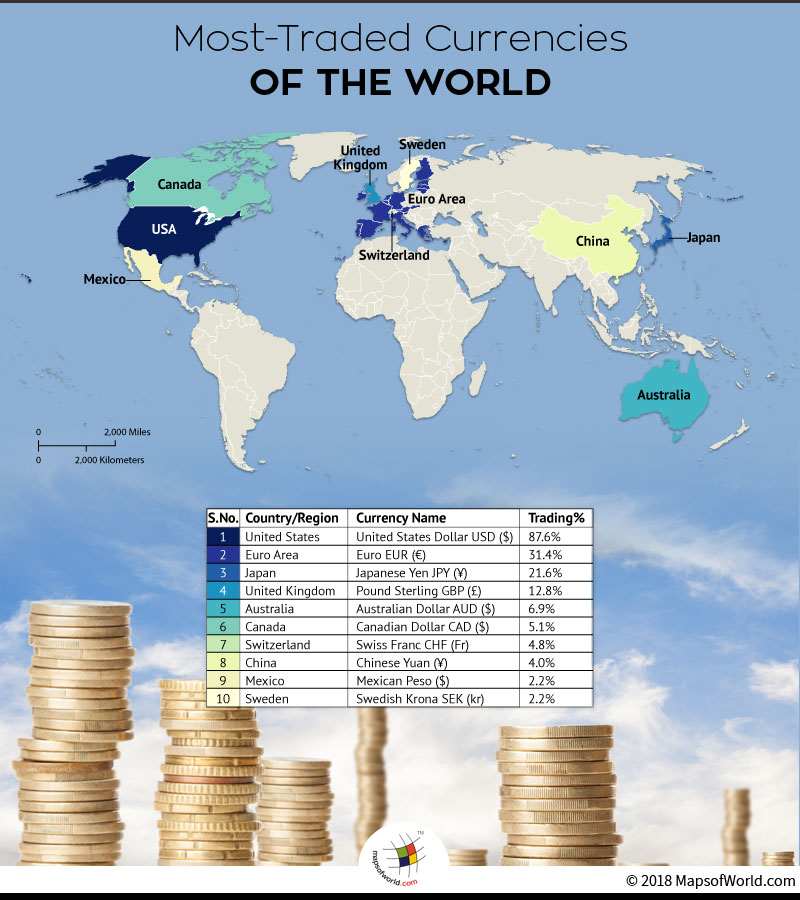Most Traded Currencies
The foreign exchange market, also known as the forex market, is the largest financial market in the world with an average daily trading volume of $6.6 trillion. This market allows for the exchange of currencies between countries, and as such, some currencies are more frequently traded than others.
Let’s take a closer look at the top ten most traded currencies in the world:
Most Traded Currencies in the World |
|||||
| Country | Currency | ISO Code | Symbol | Average Daily Trading Volume (trillions of USD) | Percentage Share (2021) |
| USA | US Dollar | USD | $ | 4.9 | 88.3% |
| Eurozone | Euro | EUR | € | 1.8 | 32.4% |
| Japan | Japanese Yen | JPY | ¥ | 0.9 | 16.6% |
| United Kingdom | British Pound | GBP | £ | 0.7 | 13.0% |
| Australia | Australian Dollar | AUD | A$ | 0.4 | 7.2% |
| Switzerland | Swiss Franc | CHF | Fr | 0.3 | 5.2% |
| Canada | Canadian Dollar | CAD | C$ | 0.3 | 4.6% |
| China | Chinese Yuan | CNY | ¥ | 0.2 | 4.3% |
| Hong Kong | Hong Kong Dollar | HKD | HK$ | 0.1 | 1.9 |
| Sweden | Swedish Krona | SEK | kr | 0.1 | 1.8 |
Know more:
- List of World Currencies
- Countries Using Dollar as National Currency
- World Reserves of Foreign Exchange and Gold
- Richest Countries in the World
Related maps:



